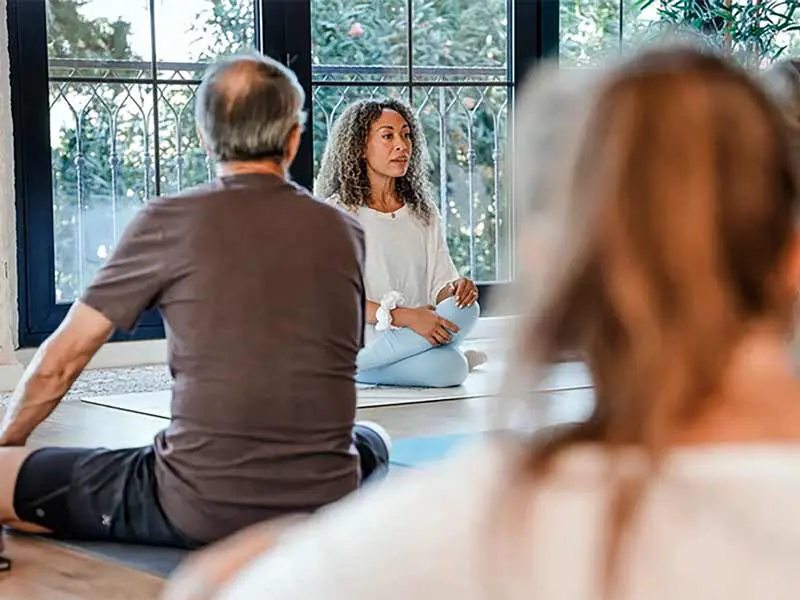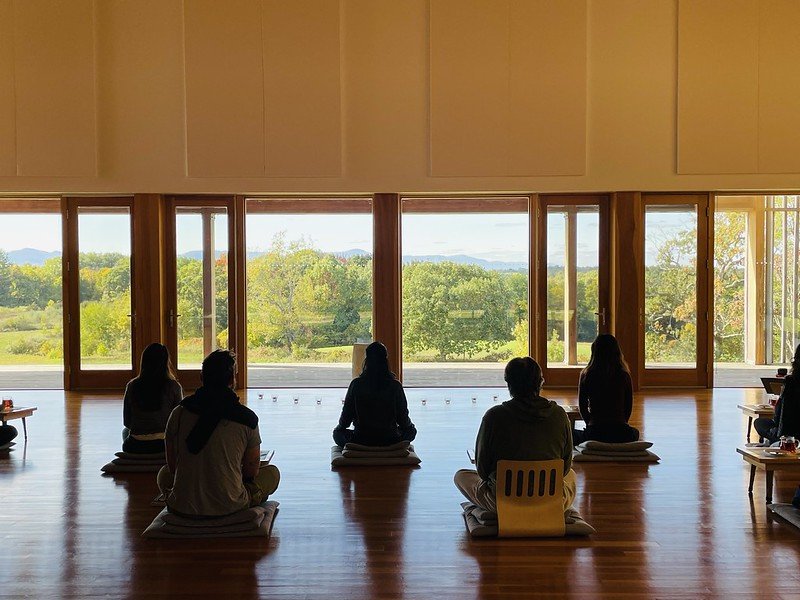Introduction
Retreat, In a world that constantly demands our attention, finding solace and rejuvenation has become a necessity rather than a luxury. The concept of retreat has evolved from a mere physical withdrawal to a holistic approach to nurturing the mind, body, and soul.
This essay explores the various dimensions of retreat, its significance in today’s fast-paced world, and how it can lead to personal growth and overall well-being.
I. Understanding Retreat
Retreat, in its essence, refers to the intentional act of withdrawing from the ordinary, often chaotic, aspects of life. While it can manifest as a physical relocation to a tranquil setting,
such as a serene countryside or a secluded mountain cabin, retreat goes beyond mere geography. It encapsulates the idea of creating mental and emotional space, disconnecting from daily pressures, and embracing introspection.

II. Types of Retreats
- Physical Retreats: These involve physically distancing oneself from the usual environment. This could be a spa getaway, a camping trip, or a yoga retreat. The change in surroundings often brings a fresh perspective and a break from routine.
- Mental Retreats: A mental retreat focuses on quieting the mind through practices like meditation, mindfulness, and deep breathing. It allows individuals to detach from the constant stream of thoughts and find inner calm.
- Creative Retreats: Engaging in creative pursuits such as writing, painting, or music in a secluded setting can provide an opportunity to tap into one’s artistic potential, free from distractions.
- Spiritual Retreats: These retreats, often rooted in religious or philosophical beliefs, aim to deepen one’s connection with the spiritual realm. They provide a space for reflection, prayer, and seeking higher understanding.
III. The Importance of Retreat
- Stress Reduction: The modern world is characterized by high levels of stress. Retreats offer a chance to unplug from technology, deadlines, and responsibilities, leading to reduced cortisol levels and improved mental health.
- Self-Discovery: Stepping away from the routine enables introspection and self-discovery. Without the usual distractions, individuals can reconnect with their core values, aspirations, and desires.
- Enhanced Creativity: Creative blocks are common, but a change of scenery and a break from the ordinary can reignite the creative spark. Many artists and writers seek retreats to overcome creative stagnation.
- Mindfulness and Well-being: Retreats often emphasize mindfulness practices, which cultivate a heightened sense of awareness and presence. This, in turn, contributes to overall well-being and a greater sense of happiness.
IV. Challenges of Retreat
- Logistical Challenges: Planning a retreat requires time, effort, and resources. Finding the right location, managing travel, and ensuring basic amenities can be demanding.
- Resistance to Disconnection: In a hyper-connected world, detaching from devices and the digital realm can be challenging. Fear of missing out (FOMO) and the need to stay constantly informed can hinder the retreat experience.
- Return to Reality: After the retreat, adjusting back to the hustle and bustle of daily life can be jarring. The sense of tranquility gained during the retreat may dissipate if not integrated mindfully.
V. Incorporating Retreat into Daily Life
While extended retreats have undeniable benefits, integrating elements of retreat into daily life can be equally transformative.
- Daily Moments of Solitude: Dedicate a few minutes each day to solitude. This could involve reading, journaling, or simply enjoying a cup of tea in silence.
- Technology Boundaries: Set boundaries for technology use. Designate certain times as “tech-free zones” to disconnect and be present.
- Nature Connection: Spend time in nature regularly. Whether it’s a walk in the park or a weekend hike, nature has a calming effect on the mind.
- Mindful Practices: Engage in mindfulness activities such as meditation or deep breathing. These practices help create mental space and foster relaxation.
Conclusion
Retreat, once considered a luxury for the elite, has evolved into a vital practice for anyone seeking balance, self-discovery, and well-being. In a world brimming with constant stimulation, carving out time for retreat, whether in the form of a physical getaway or daily mindfulness practices, is an investment in our mental, emotional, and spiritual health.
The art of retreating allows us to rediscover ourselves amidst the chaos, fostering a deeper connection with both our inner selves and the world around us.

Frequently Asked Questions (FAQs) About Retreats
1. What is a retreat?
A retreat is a deliberate and temporary withdrawal from the usual demands and pressures of daily life. It involves stepping back from routine activities and surroundings to gain a new perspective, find tranquility, and engage in self-care.
2. What are the different types of retreats?
There are several types of retreats, each catering to different needs:
- Physical Retreats: These involve changing your physical environment, often to a peaceful location, to recharge and rejuvenate.
- Mental Retreats: These focus on quieting the mind through practices like meditation and mindfulness to achieve inner calm.
- Creative Retreats: They provide an opportunity for artists and creators to find inspiration and overcome creative blocks.
- Spiritual Retreats: Rooted in spiritual practices, these retreats allow participants to connect with their deeper beliefs and seek spiritual growth.
3. Why are retreats important?
Retreats offer various benefits:
- Stress Reduction: They provide a break from daily stressors, leading to improved mental and emotional well-being.
- Self-Discovery: Retreats offer a chance to reflect, gain insights into oneself, and clarify personal goals.
- Enhanced Creativity: A change in environment often sparks creativity and fresh ideas.
- Mindfulness and Well-being: Retreats encourage mindfulness practices that promote presence and overall happiness.
4. How can I find the right retreat for me?
Consider your goals and preferences:
- Identify your intention: Do you seek relaxation, creativity, spiritual growth, or something else?
- Research: Look for retreats that align with your interests and needs.
- Location: Decide whether you prefer a serene natural setting, a spa, or an urban retreat.
- Reviews: Read reviews and testimonials to get an idea of the retreat’s quality and impact.
5. What challenges might I face during a retreat?
Common challenges include:
- Disconnection from Technology: Adjusting to limited or no access to digital devices can be challenging in today’s connected world.
- Initial Discomfort: Stepping out of your comfort zone might feel uneasy at first, but it can lead to personal growth.
- Return to Reality: Coming back to your usual routine after a retreat may require adjusting.
6. Can I experience the benefits of a retreat without attending one?
Absolutely. You can integrate retreat elements into your daily life:
- Practice mindfulness: Engage in meditation or deep breathing exercises regularly.
- Schedule solitude: Dedicate moments to quiet reflection and self-care.
- Limit technology use: Establish tech-free zones and times to disconnect and be present.
7. How do I make the most of a retreat experience?
- Embrace Openness: Be open to new experiences and ideas that the retreat might offer.
- Disconnect: Use the opportunity to disconnect from technology and be fully present.
- Participate Actively: Engage in the retreat activities, workshops, and discussions to make the most of the experience.
- Reflect: Take time to reflect on your experiences and insights gained during the retreat.
8. Are retreats only for individuals?
No, retreats cater to various preferences:
- Individuals: Many people attend retreats solo for personal growth and reflection.
- Couples: Couples can use retreats as an opportunity to strengthen their relationship and bond.
- Groups: Group retreats offer shared experiences, team-building, and community connection.
9. Are there virtual retreat options?
Yes, virtual retreats have gained popularity, allowing participants to engage from the comfort of their homes. These retreats often involve online workshops, guided sessions, and interactive discussions.
10. How do I reintegrate into daily life after a retreat?
Give yourself time to adjust:
- Reflect: Consider the insights gained and how you can incorporate them into your routine.
- Gradual Transition: Slowly reintroduce your regular responsibilities, maintaining the balance and lessons learned during the retreat.
Remember that retreats are a personal journey, and the experience can vary greatly based on individual needs and circumstances